Tyrosine Kinase
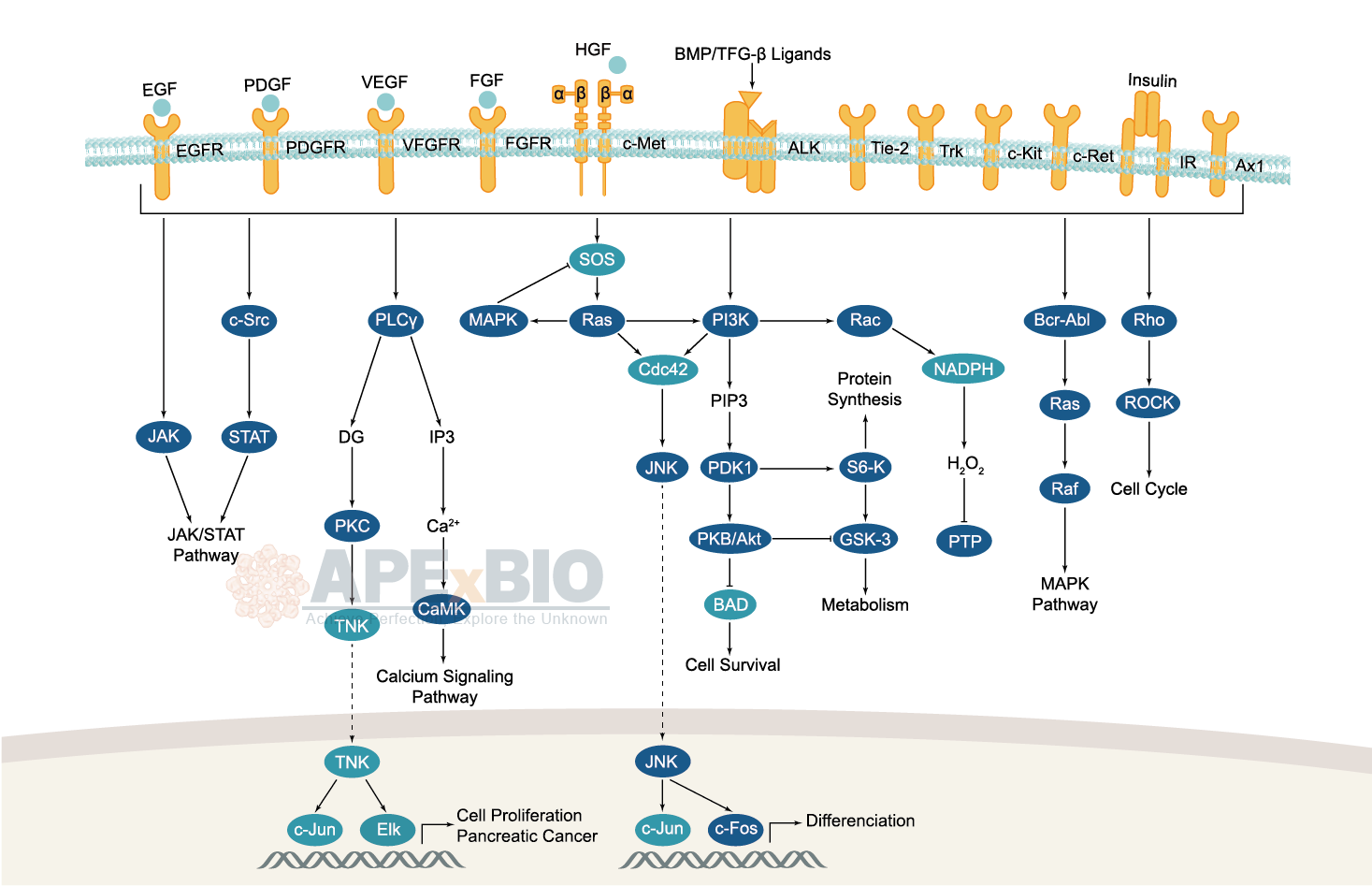
Receptor tyrosine kinases bind to extracellular ligands/growth factors, which promotes receptor dimerization and autophosphorylation of receptor tyrosine residues. This triggers a cascade of downstream events through phosphorylation of intracellular proteins that ultimately transduce the extracellular signal to the nucleus, causing changes in gene expression. Receptor tyrosine kinases include EGFR/ErbB, PDGFR, VEGFR, FGFR and MET subfamilies etc. Dysfunctions in tyrosine phosphorylation are linked to oncogenic transformation. In additions, various adaptor and effector proteins couple to carboxy-terminal of an active kinase. For instance, binding of the GRB2 adaptor protein activates EGFR and MAPK/ERK signaling.
Non-receptor tyrosine kinases involve many well-defined proteins (e.g. the Src family kinases, c-Abl, and Jak kinases) and other kinases which regulates cell growth and differentiation. For example, Src family kinases are curial for activating and inhibitory pathways in the innate immune response.
-
 A3844 SU14813Summary: Tyrosine kinase inhibitor
A3844 SU14813Summary: Tyrosine kinase inhibitor -
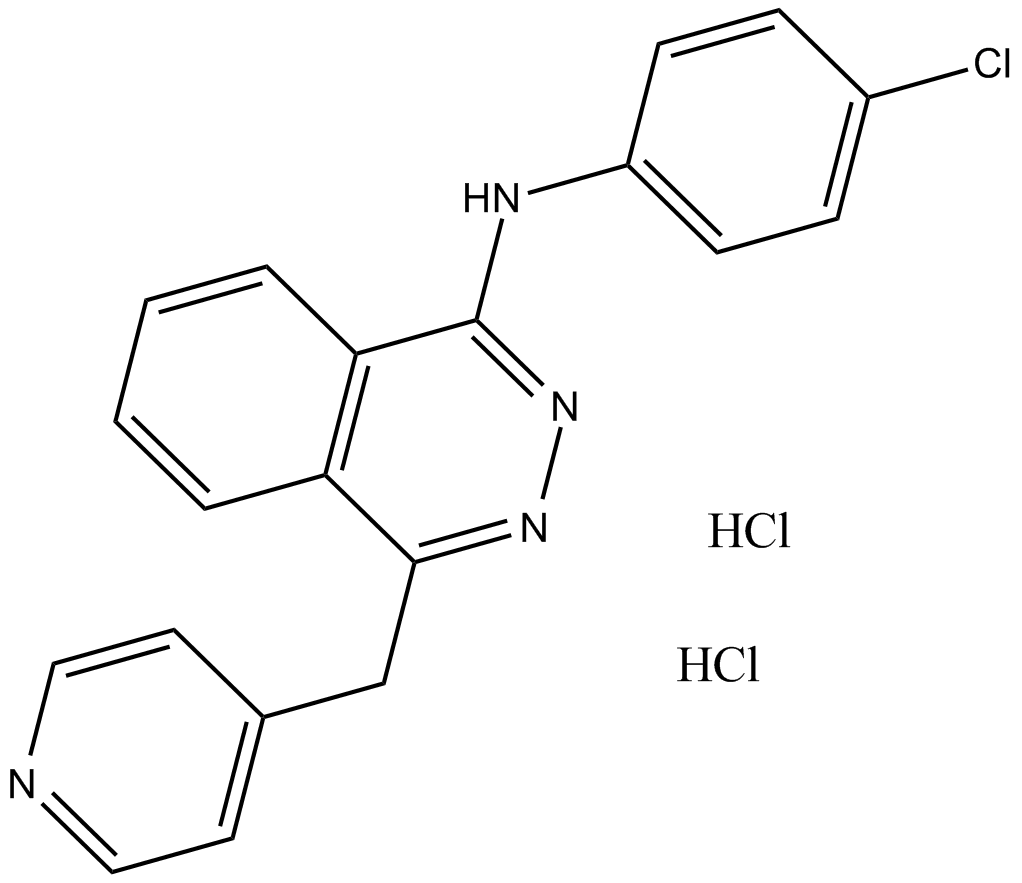 A1778 Vatalanib (PTK787) 2HClTarget: VEGFRSummary: Tyrosine kinase receptor inhibitor
A1778 Vatalanib (PTK787) 2HClTarget: VEGFRSummary: Tyrosine kinase receptor inhibitor -
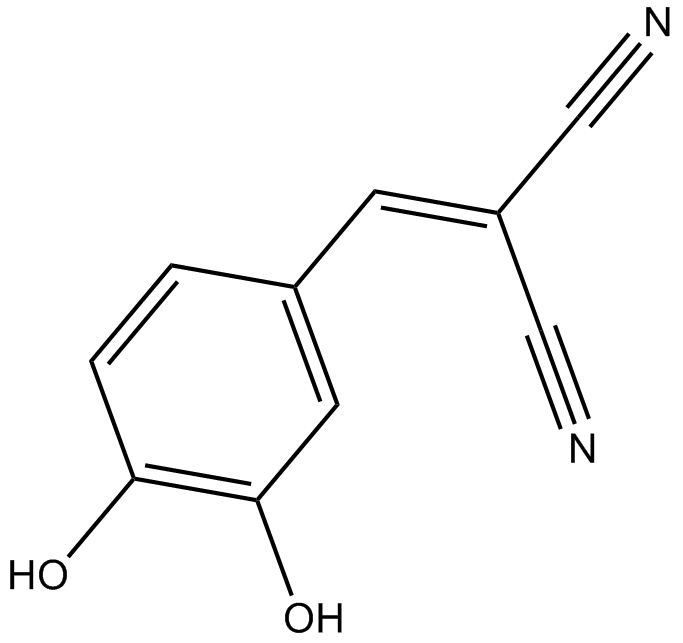 A1173 AG-18Summary: EGFR/PDGFR inhibitor
A1173 AG-18Summary: EGFR/PDGFR inhibitor -
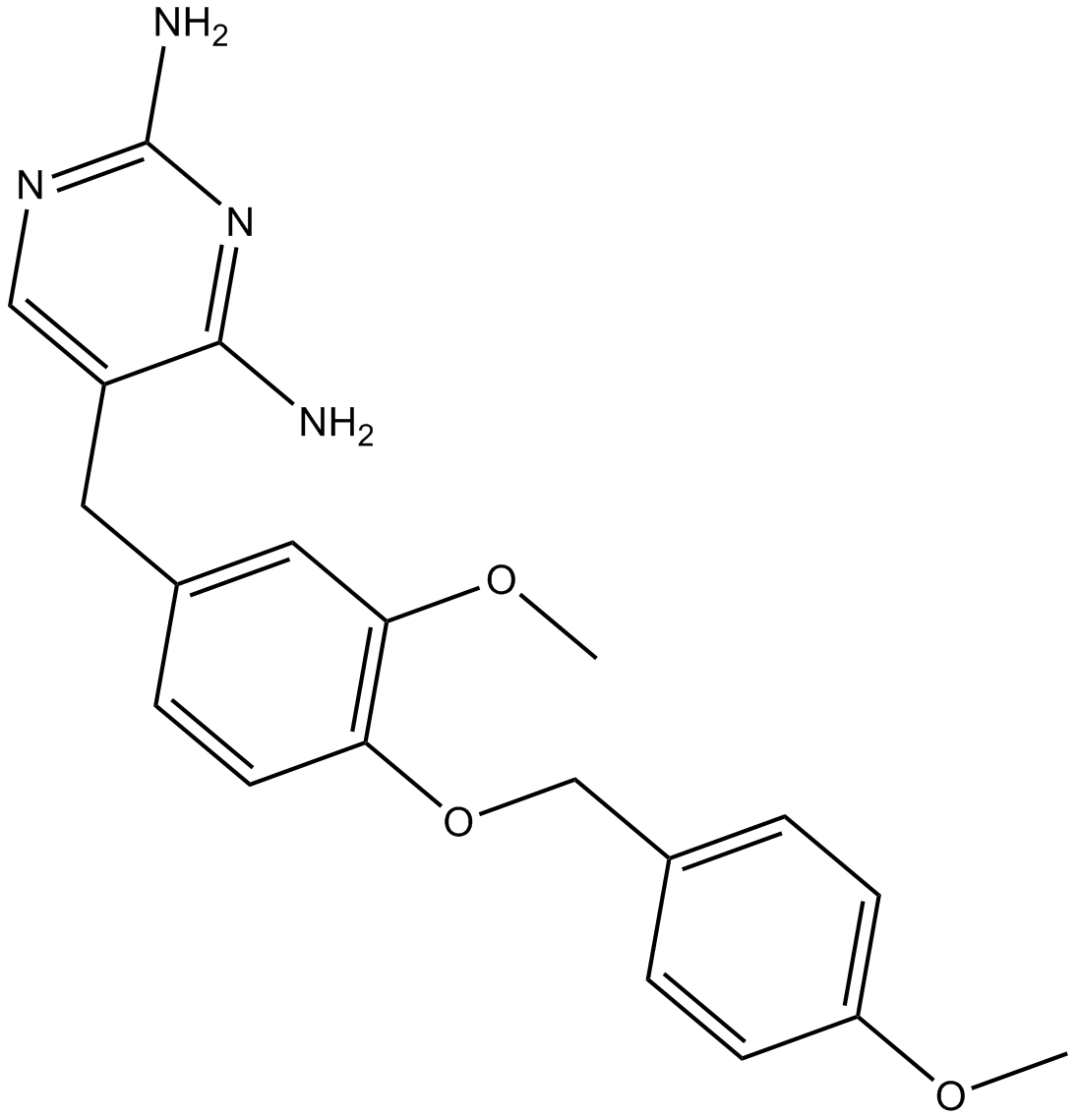 A1655 GW25801 CitationTarget: CSF-1RSummary: CFMS kinase/CSF-1R inhibitor,selective and ATP-competitive
A1655 GW25801 CitationTarget: CSF-1RSummary: CFMS kinase/CSF-1R inhibitor,selective and ATP-competitive -
 A2323 TCS 359Summary: Potent FLT3 inhibitor
A2323 TCS 359Summary: Potent FLT3 inhibitor -
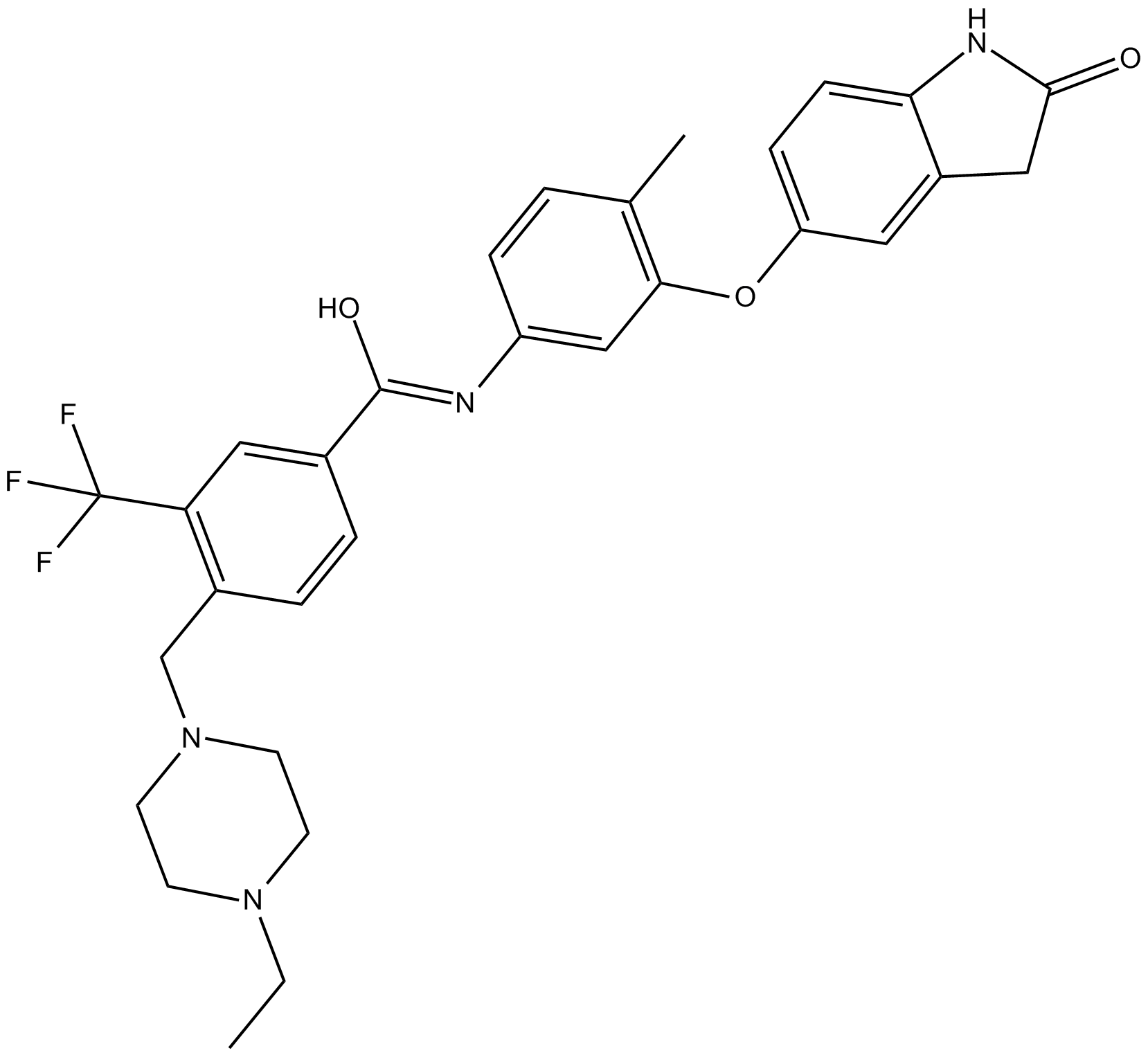 B3383 DDR1-IN-1Summary: selective DDR1 receptor tyrosine kinase inhibitor
B3383 DDR1-IN-1Summary: selective DDR1 receptor tyrosine kinase inhibitor -
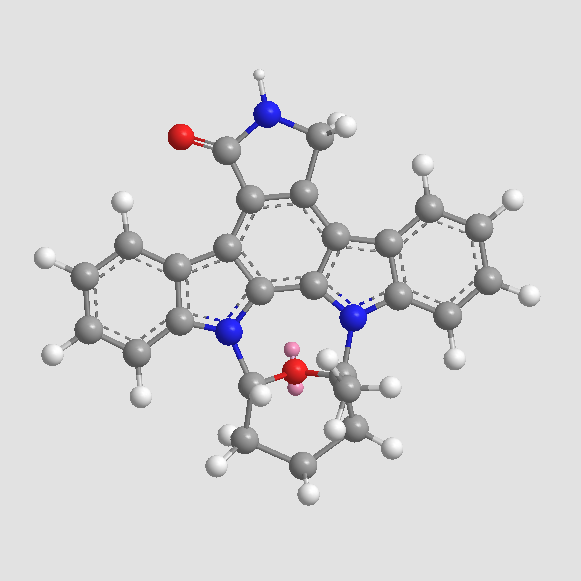 A8192 Staurosporine6 CitationSummary: serine/threonine protein kinases inhibitor
A8192 Staurosporine6 CitationSummary: serine/threonine protein kinases inhibitor -
 A4475 TLQP 21Summary: VGF-derived peptide
A4475 TLQP 21Summary: VGF-derived peptide -
 A1185 BMS-754807Target: Insulin and Insulin-like ReceptorsSummary: IGF-1R/InsR inhibitor,potent and selective
A1185 BMS-754807Target: Insulin and Insulin-like ReceptorsSummary: IGF-1R/InsR inhibitor,potent and selective -
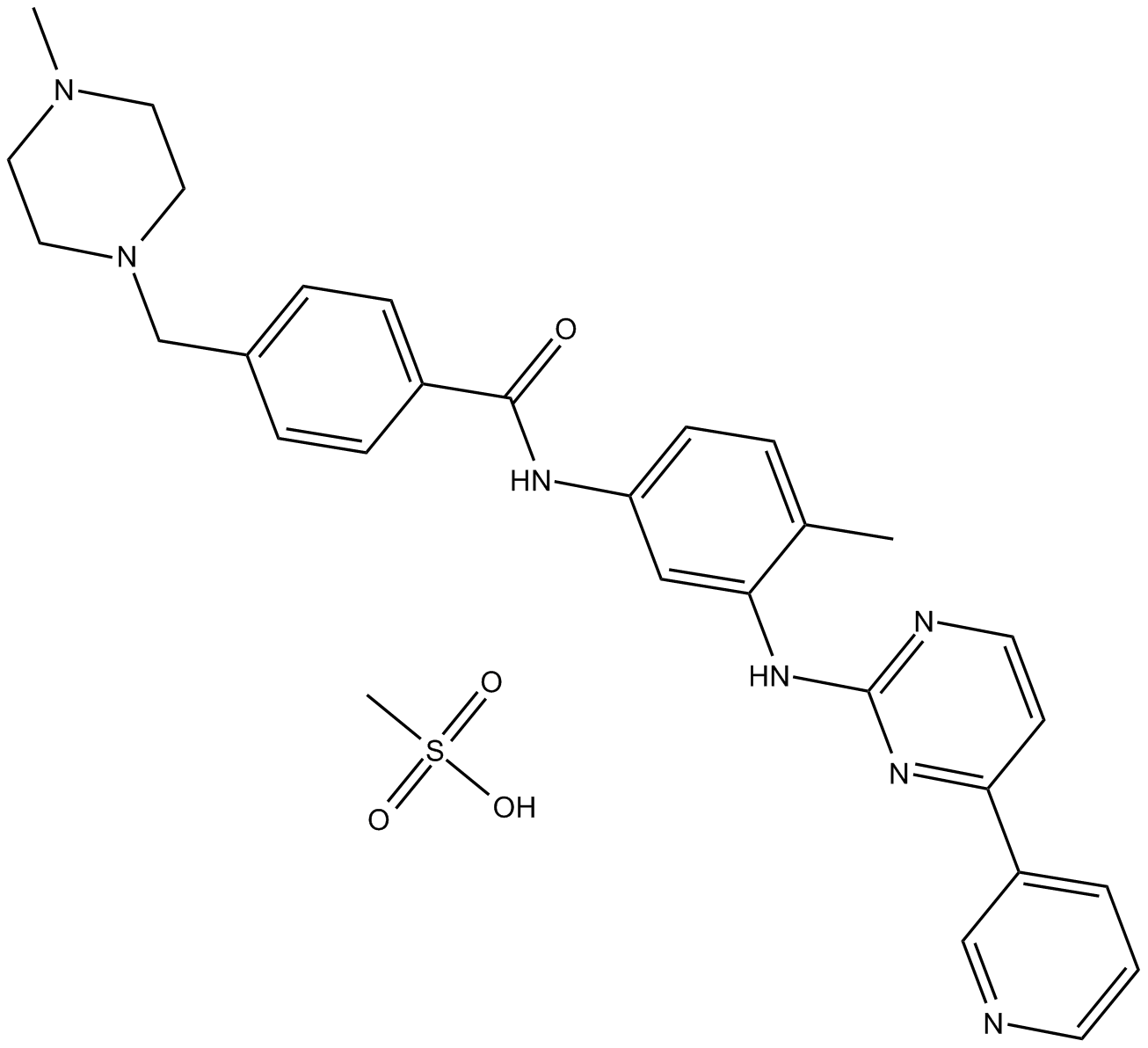 A1805 Imatinib Mesylate (STI571)Target: PDGFR|c-Kit|Bcr-AblSummary: Abl/c-kit/PDGFR inhibitor
A1805 Imatinib Mesylate (STI571)Target: PDGFR|c-Kit|Bcr-AblSummary: Abl/c-kit/PDGFR inhibitor

